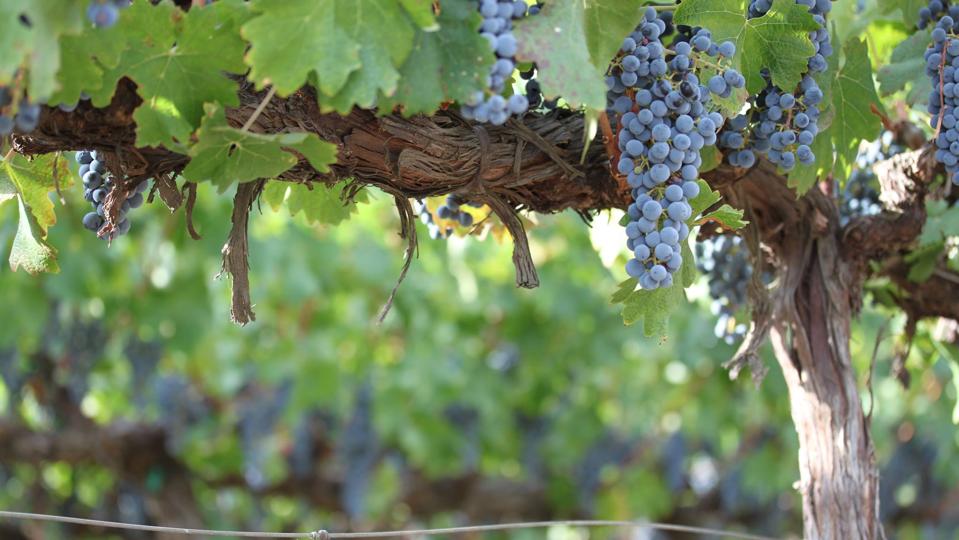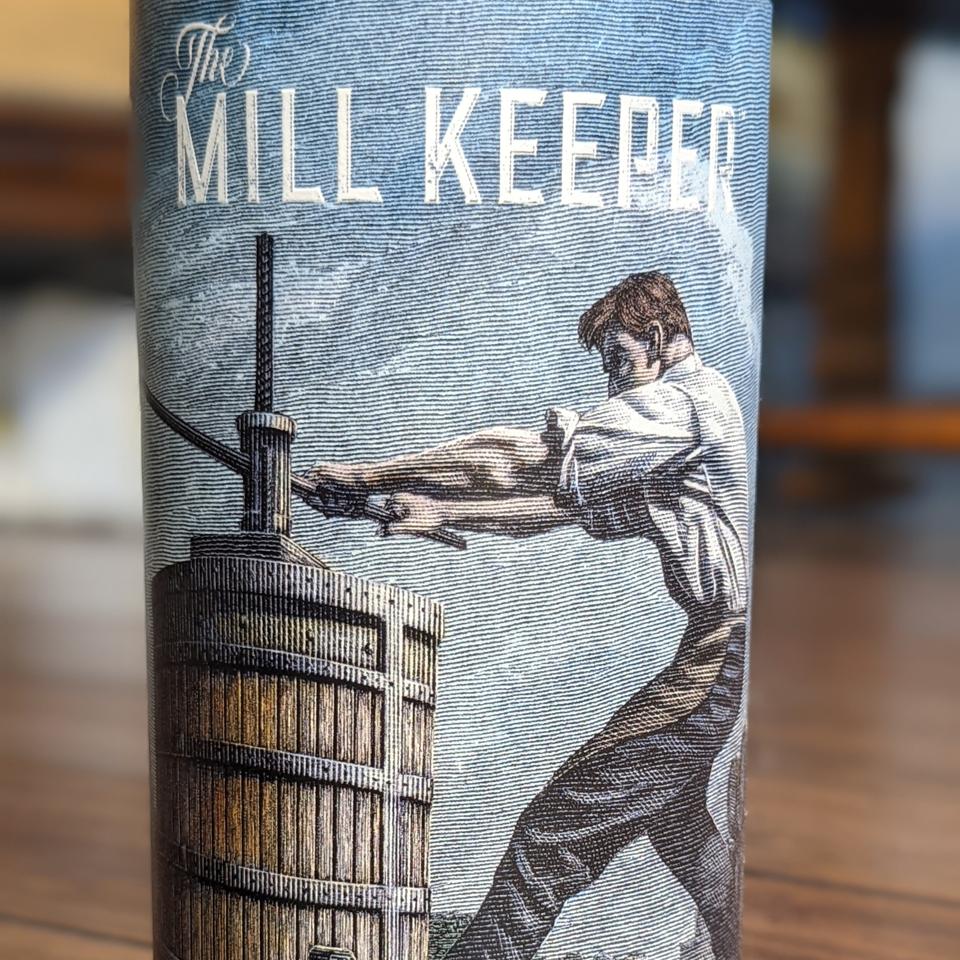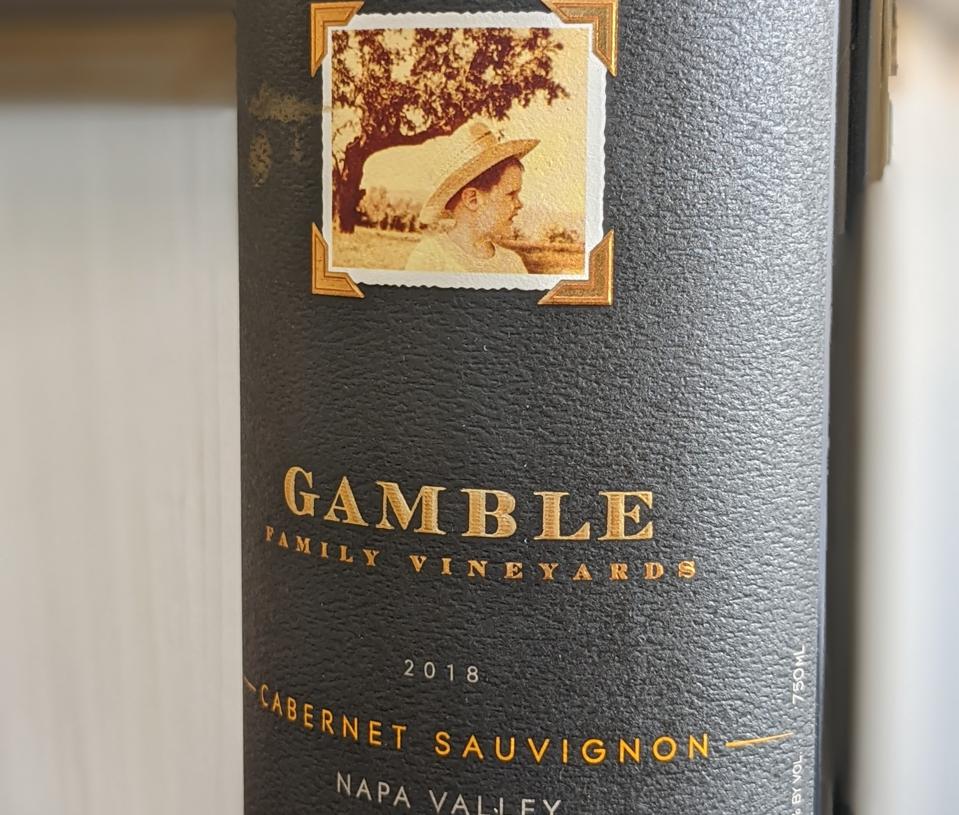
As the glow from the sun lit up the vine leaves with a heavenly golden color, a constant soft sound of grape bunches hitting the soil could be heard. It was a few weeks before harvest time in Napa Valley, and the all-important process of "green harvesting" was taking place at the beginning of the grape ripening process – known as veraison to grape growers. It is a common practice among many top vineyards around the world that helps to concentrate the remaining grapes as it tricks the vines into thinking that they have a lot more grapes to ripen, hence, giving a big push of energy to significantly fewer grapes.
Such a practice, even for the world’s most iconic wine regions, would be unthinkable just two generations ago but over the past two decades it has become mandatory if one is selling ultra-premium wine as it helps to concentrate the grapes resulting in a wine with incredible aromas, flavors and overall density. But it had always bothered the farmer's spirit that lives within Tom Gamble, as it looks like an abundance of waste.
Gamble Family Vineyards
Tom is a third-generation Napa farmer, and it is remarkable to think that his grandfather at one time owned 20,000 acres in the valley. If Tom owned that amount today, it would be the equivalent of winning the lottery but back then his grandfather was considered land poor as much of the land that his grandfather bought in the 1920s and 1930s wasn't worth much at the time. Tom is the first grape grower and wine producer of his family as his grandfather grew various grains, walnuts and tomatoes as opposed to wine grapes and through time found himself on the brink of ruin a few times when he had a bad crop, or when a particular product he grew didn't sell well.

Unfortunately, Tom's grandfather did not think of estate planning and so when Tom's father and uncle dropped out of school to try to save the property when his grandfather went blind, they were shocked to find out a decade later when he passed away, in the 1970s, that they owed an enormous amount of tax money that was far beyond the income of their farm. And so some property had to be sold off, yet they were smart enough to lease out the land they continued to own to a large and successful wine producer who still, to this day, leases that land and it puts a "financial underpinning" under the family. As one can imagine, neither Tom's father nor uncle wanted anything to do with farming, and that included wine; they just wanted to bring in enough money so each could follow his own dream and avoid the potential of tearing the family apart by choosing to not go into the wine business together. Tom noted that many wine families have been "messed up" because of silly arguments such as not agreeing on the grape variety to plant.
Tom chuckled as he talked about "receiving the recessive gene trait" of wanting to be a farmer yet he was crazy enough to take it to the next level of planting and managing vineyards. But perhaps that is not so shocking considering that there was some curiosity by his grandfather who planted two acres of Petite Sirah during World War II – although Prohibition squashed any wine dreams he might have had at the time. And so he went to the renowned U.C. Davis to study agronomy, winemaking and take an array of other classes such as studying ancient civilizations as he is a man who likes to philosophize about life as much as making jokes at his own expense. But he gained a reputation for high-quality Cabernet Sauvignon vineyards and sells his grapes for a premium as he goes to great lengths to grow outstanding fruit. Before "regenerative agriculture" became such a hot topic, Tom employed such practices that reverse climate change by rebuilding soil's organic matter and restoring soil biodiversity.

And even though Tom has carved out a name for his ultra-premium Cabernet Sauvignon grapes, he also has had a deep love for Sauvignon Blanc and he has collected seven different clones of this variety, keeping the biodiversity of plant material alive and well, going to great lengths to obtain such clones. The Preston clone of Sauvignon Blanc is a suitcase clone brought back from Bordeaux sometime in the late 50s to early 60s by a "true bohemian" named Lou Preston, who allowed others to take cuttings from his vineyard in Dry Creek Valley. The Preston clone found its way into Peter Michael's L'Après-Midi, which Tom was a fan of from its inception, but unfortunately, Lou's vineyard was ravaged by virus and so Tom couldn't get cuttings from the source. Yet when he heard about a vineyard in Oakville, Napa, planted with Lou Preston's clone, that was going to be ripped out due to a new owner wanting to plant Cabernet Sauvignon instead, Tom showed up to the site days before the bulldozers came and took cuttings to grow in his own vineyard in Yountville, Napa, in 1998.
Today, Tom says that universities such as U.C. Davis and Cornell can grow plants from tissue that is smaller than a virus, and hence, they can grow healthy vines from virus clones as the virus cannot affect the new plant.

But eventually, Tom was drawn to make wine himself and he established Gamble Family Vineyards, releasing his own bottling with the 2005 vintage only having one winemaker since that time. It is not the most "practical" approach, especially when someone doesn't own another business in a much more profitable industry that can support a Napa winery, but Tom joked that he has only been practical a couple of times in his life as his passion supersedes logic at times. Although known for his Cabernet Sauvignon vineyards, he charges more than the average price for his Sauvignon Blanc grapes which are ultra-premium grapes in their own right and he has had longtime relationships with wineries who were happy to pay the price even if others balked at the cost in the past as it was not a valued grape variety at one time. Ironically, Napa Valley Sauvignon Blanc has become very popular in recent times and he now finds a lot more wine producers trying to purchase his grapes.
Tom still sells most of his grapes from his 175-acre estate, spread across such lauded Napa sub-regions as Oakville, Mt. Veeder, Rutherford and Yountville and he keeps his own wine production small. Yet that farmer in him could not help but want to take his winemaking ventures to a new and challenging direction, a multi-vintage Cabernet Sauvignon Napa Valley wine.
Napa Cabernet Sauvignon Multi-Vintage
Tom Gamble has always been very forward-looking as over a decade ago, he was a part of drafting important California sustainable programs such as Fish Friendly Farming and Napa Green programs and he is currently going through the process of becoming Regenerative Organic certified. But when he sees the waste that green harvesting causes, all those grapes bunches lopped off and thrown away, he feels that there has to be a better way, especially considering if he wants to make wines that appeal to the next generation of wine drinkers who he deems as being "passionate" about their values and incredibly "thoughtful" about saving the planet.

And so, in 2021, Tom founded The Mill Keeper, and as France has inspired him for much of the wines he makes as well as where he plants each variety, Tom is now inspired by Champagne, where they blend vintages to create consistency from grapes that are picked at lower ripeness levels, and hence, the creation of the Multi-Vintage (MV) Napa Cabernet Sauvignon, as he prefers MV over Non-Vintage (NV) as NV doesn't bring focus to each story of the different vintages. The name is a tribute to Napa's first mill keepers who were able to transform nature's raw material with "work, determination, and skill" into a "dependable, approachable finished product."
He takes those grape bunches that are cut off during green harvest, at lower ripeness levels than average, and he found a large commercial winery that can separate the juice and good stuff from the seeds and green skins immediately, so it is then brought back to his winery where they ferment the wine without using any oak barrels, and it ends up being a fresh, delicious and lively wine made from top Napa Cabernet Sauvignon grapes, that would have just been thrown out, that retails at $35; blending vintages helps to bring more consistency to these grapes as some vintages are hotter than others. It is a great way to get young people into drinking Napa but most importantly, it is about Tom taking the next step at taking a hard look at his own life, even if he has lived an environmentally conscious life, and finding where he can do more in preventing catastrophe for the future.

"We are coming to the practical limits and the political limits of developing new vineyards in Napa, and no one wants to see a forest cut down for another vanity project," exclaimed Tom.
And it becomes clear that even in a world like Napa, where a grape grower's and wine producer's costs are through the roof with excessive taxes, as well as being an employer who pays living wages in an area where living has become extremely expensive, a farmer can find another way to stop the madness of destroying Mother Nature. And not just any farmer but one who, as a small child, would run out every morning and talk to the trees, giving them each their own name. "I have been a tree-hugger for a long time," Tom said as he explained why he placed a photo of himself as a child with a tree in the background on his Gamble Family Vineyards wine label.
And the wine world could certainly use more innovators who still have that little child alive in him, still seeing the wonderment all around him each time he walks the vineyards.

The Gamble Family Vineyards wines use native yeasts and Tom says he has never had an issue with weird ferments as he has a wide range of native yeasts that flourish in his vineyards since he has consistently implemented sustainable practices that encourage biodiversity.
The Mill Keeper
The Mill Keeper by Gamble Family Vineyards, Cabernet Sauvignon MV (Multi-Vintage), Yountville, Napa Valley: Cabernet Sauvignon from 2018 and 2019 vintages. A lovely juiciness to this wine with hints of ripe plums, cinnamon stick and crushed rocks with silky tannins and bright acidity with no indication of any green notes.
Tom Gamble didn't make any red wine in 2020 because of the fires, so there are only 2018 and 2019 vintages in the MV wine. It has been a lot of trial and error for him to try to figure out how to make delicious wine from grapes with low ripeness levels, so he only has two vintages for now. If this project is successful, he would love to eventually blend around five vintages into The Mill Keeper, bringing more complexity to the wines. They also make The Mill Keeper Multi-Vintage Chardonnay.
Gamble Family Vineyards

2020 Gamble Family Vineyards, Sauvignon Blanc, Yountville, Napa Valley: 100% Sauvignon Blanc made from four different clones. Mixture of exotic fruit like mango and stone fruits such as nectarine with hints of stony minerality and zingy lemon confit on the finish.

2017 Gamble Family Vineyards "Heart Block" Yountville, Napa Valley: 100% Sauvignon Blanc from two clones in the heart of the vineyard that Tom thought was like those Sauvignon Blanc vineyards in Bordeaux which he loves so much. Honeycomb and toasted spices on the nose with complex layers of quince paste, grapefruit rind, dried chamomile and wet stones with a touch of creaminess mid-palate, a wine with multifaceted flavors and textures. Tom wanted to show how well great Sauvignon Blanc can age and says that he finds that this wine is in its ideal place around eight years old.

2018 Gamble Family Vineyards, Cabernet Sauvignon, Napa Valley: 80% Cabernet Sauvignon, 7% Petit Verdot, 5% Merlot, 5% Cabernet Franc and 3% Malbec. Dusty earth notes balanced by rich cassis flavors with hints of fresh tobacco and espresso taking it to the next level of deliciousness that has finely structured tannins with some grip along the focused finish.

2016 Gamble Family Vineyards "Paramount" Napa Valley: 31% Cabernet Sauvignon, 31% Cabernet Franc, 30% Merlot and 8% Petit Verdot. All the varieties in this wine are balanced so well with multi-layered fruit characters that range from freshly picked blueberries to raspberry liqueur that is further highlighted by fresh coffee grounds, cocoa powder and dried herbs with silky tannins and sweet spice on the finish.

2016 Gamble Family Vineyards "Family Home" Napa Valley: 100% Cabernet Sauvignon from a single vineyard in Oakville on a rocky knoll-top that creates a high-stress environment for the vines producing more concentrated fruit. Enticing smoky black tea aromas such as Lapsang Souchong with ripe red cherries and hints of wildflowers with lush flavors on the palate and blackcurrant preserves intermixed with complex notes of cigar box and gravelly earth.






